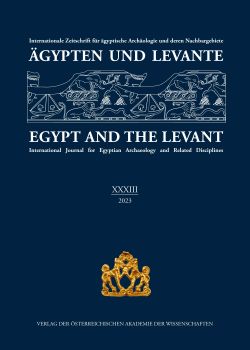
Ägypten und Levante 33, pp. 179-199, 2024/02/28
Internationale Zeitschrift für ägyptische Archäologie und deren Nachbargebiete
International Journal for Egyptian Archaeology and Related Disciplines
Royal funerary complexes in Old Kingdom Egypt are multifaceted, meaning-laden spaces where, from the early Fourth Dynasty, large areas of wall reliefs were devoted to scenes featuring rows of personifications representing estates, provinces, regions, and elements of the Egyptian landscape, offering food and other items to the deceased king. While a widespread interpretation sees these scenes as a collective contribution from the entire country to sustain the monarch in the afterlife, it proves too general and warrants a more detailed explanation. Considering the polysemy of these spaces, two complementary meanings emerge. One is political, revealing the king’s dominion over the territory through the imposition of administrative organization and its appropriation via taxation in kind. The other is funerary, guaranteeing the king’s royal status postmortem, affirming his control of the ordered world, and securing the supply of offerings for his afterlife existence. Further evidence from the Third Millennium BCE supports this interpretation, illustrating the appropriation, anthropization and personification of the Egyptian landscape. This deliberate control and ordering of the environment facilitate the transformation of nature into habitat and nourishment, and nourishment into taxes and offerings perpetually owned and consumed by the deceased king.
Keywords: Ancient Egypt, Old Kingdom, royal funerary complexes, offering, landscape, personification